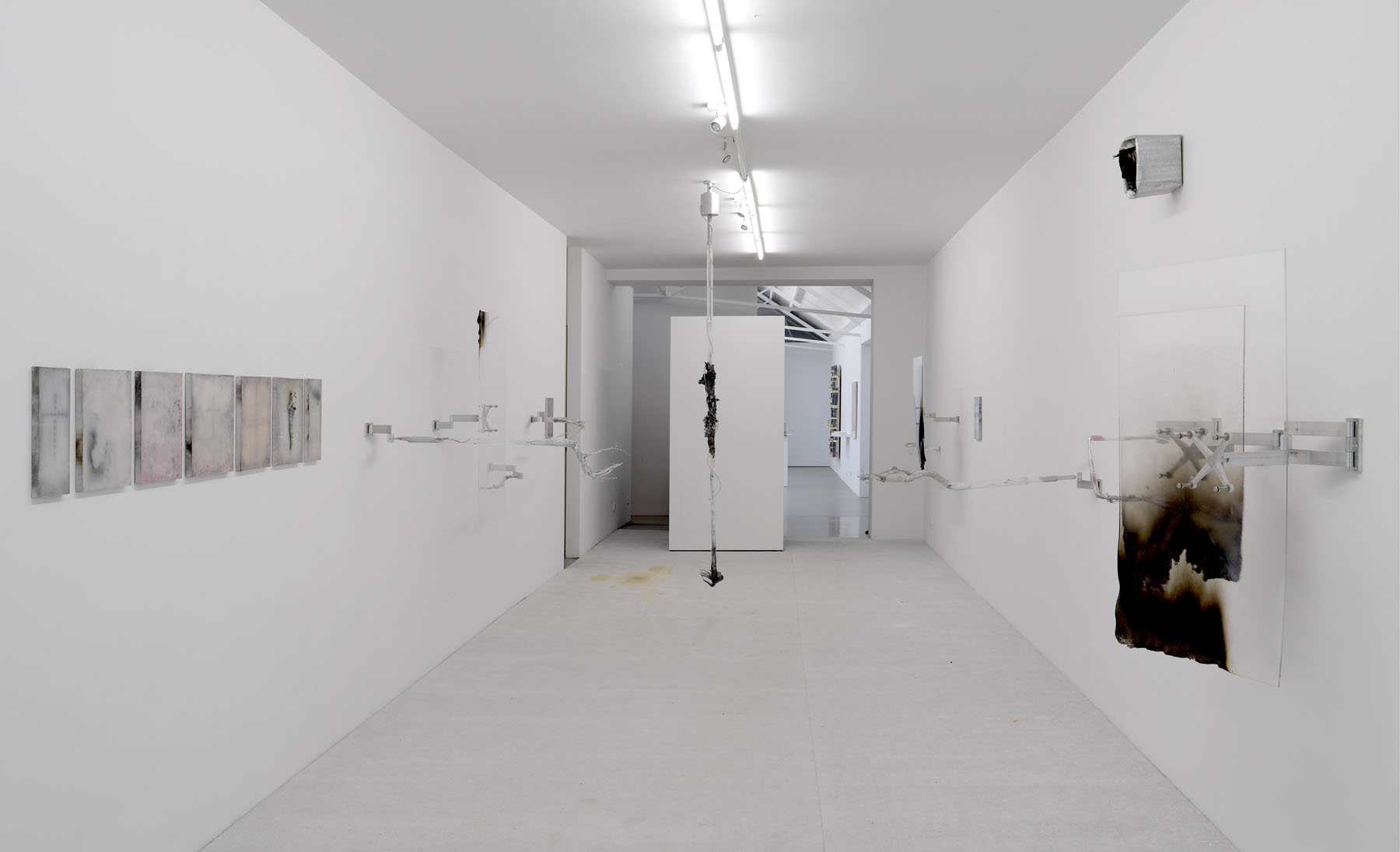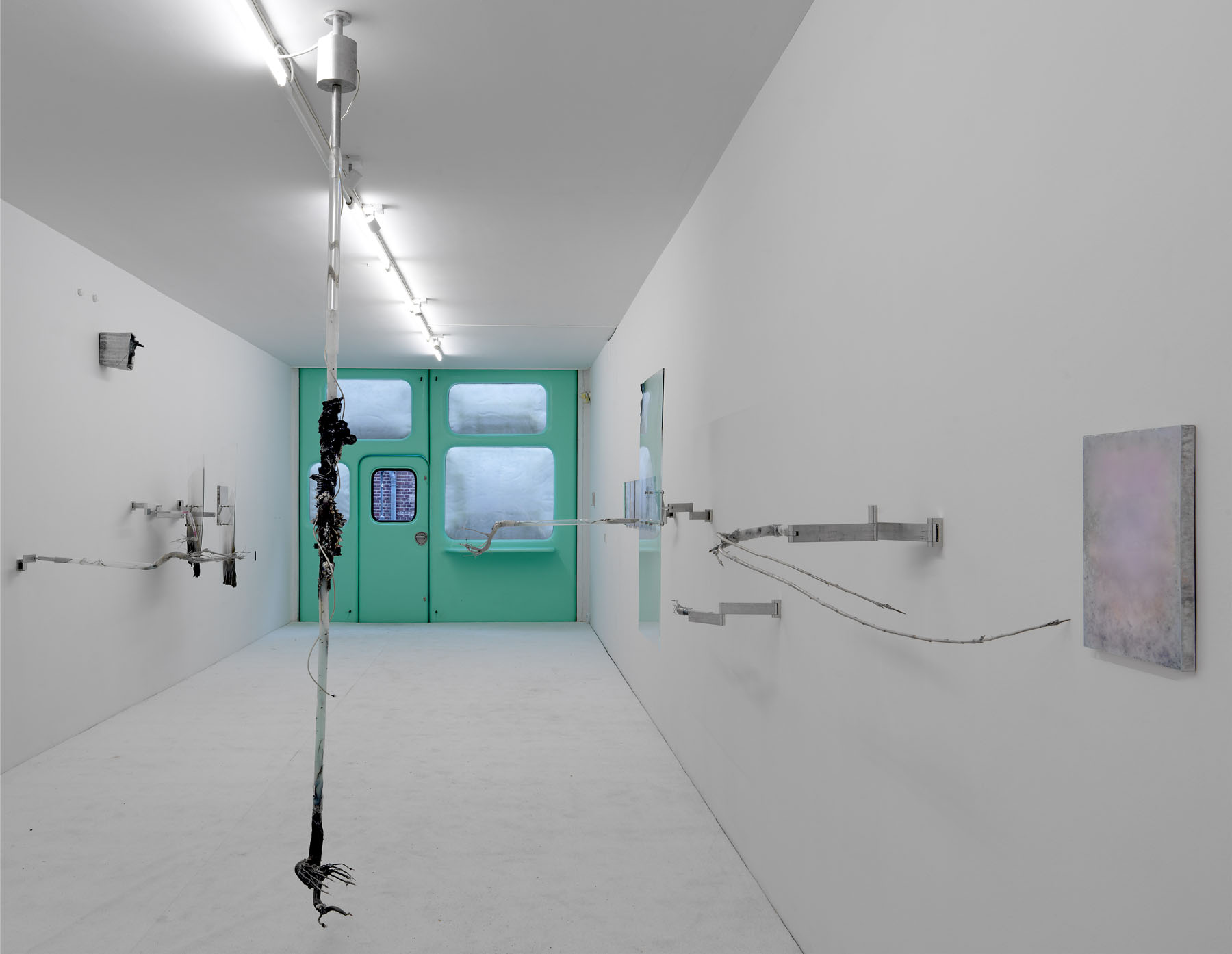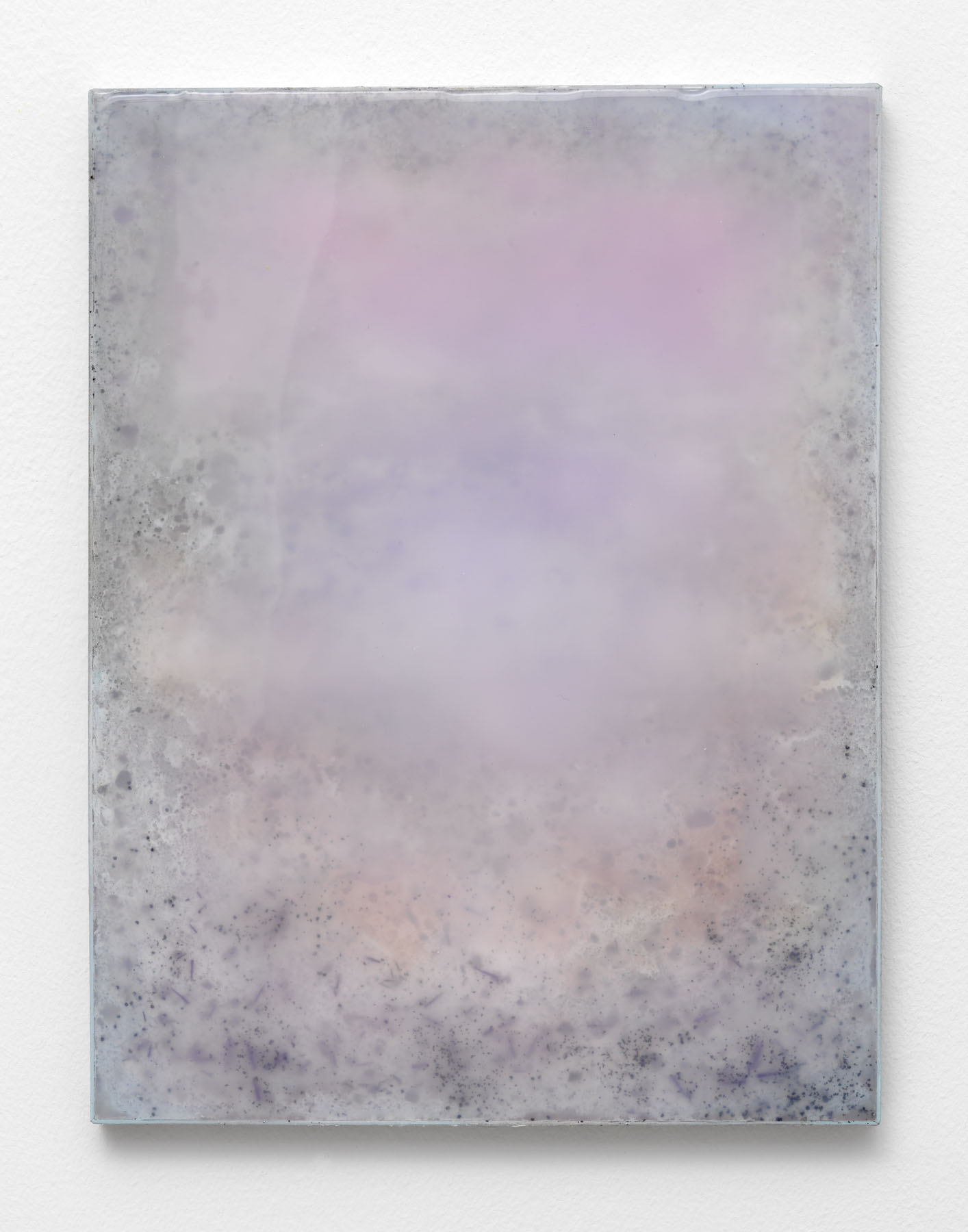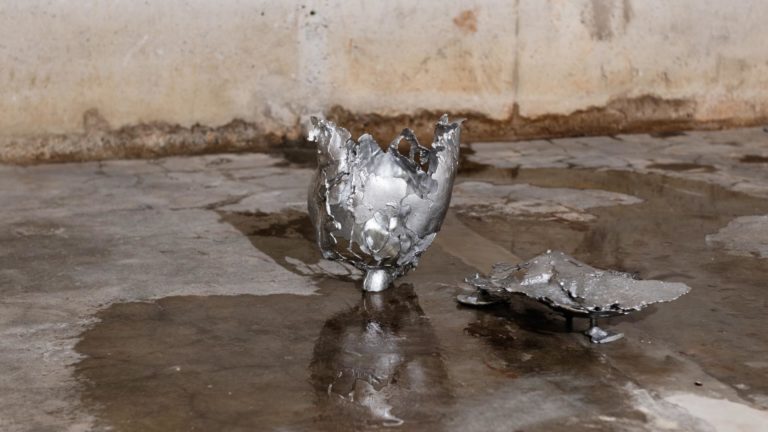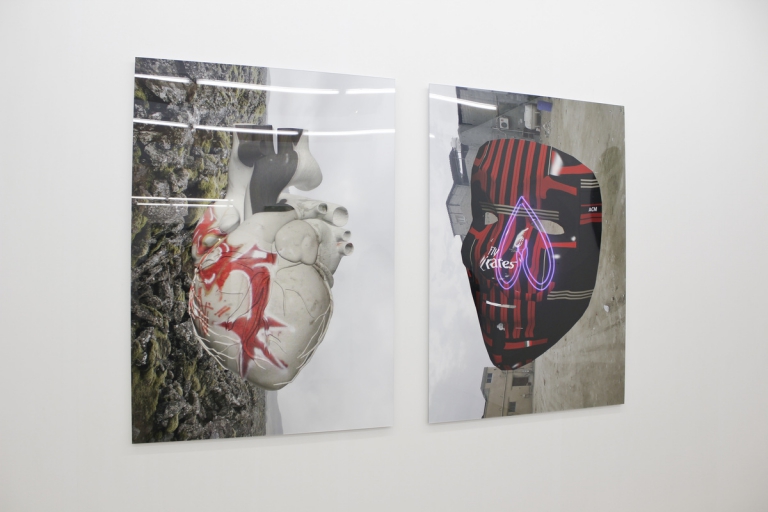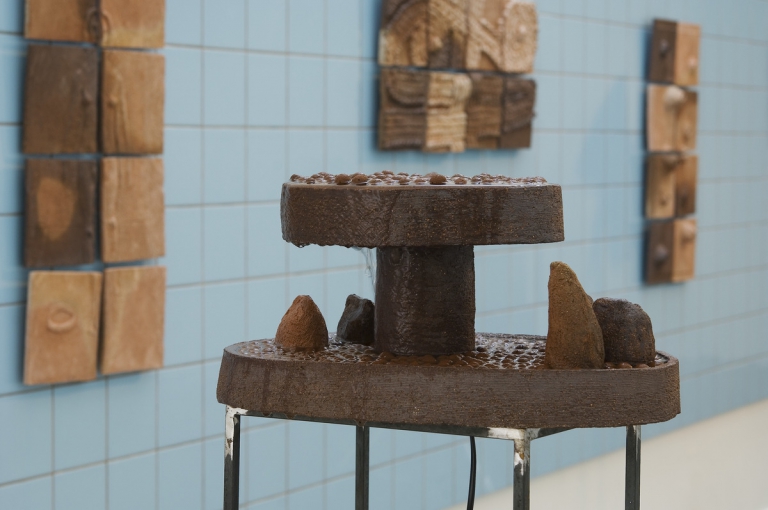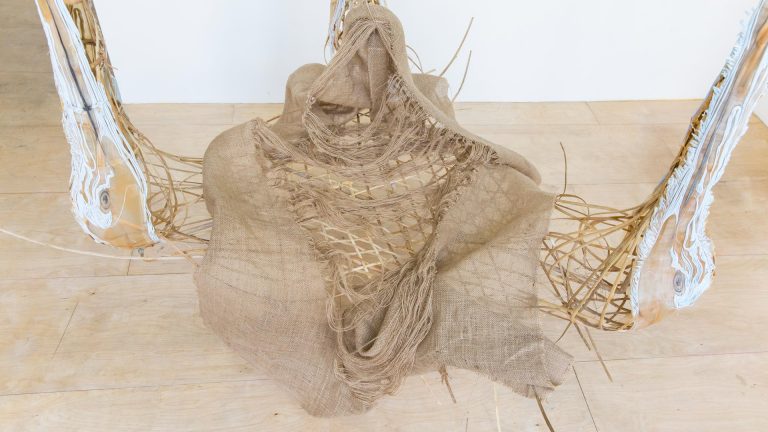Artist: Adriano Amaral
Venue: Galerie Fons Welters, Amsterdam, The Netherlands
Date: October 17 – November 21, 2020
Photography: all images copyright and courtesy of the artist and Galerie Fons Welters, Amsterdam
“With an intuitive approach towards materials, combining industrial and discarded personal objects, Amaral creates site-sensitive installations that model the exhibition space as an encompassing experience. In his response to existing architectural qualities, Amaral both subverts and transforms them. Although discussions about the relationship between the human and the artificial have intensified in the last couple of years, this relationship is nothing new. Humans are, and always have been, reshaped by the objects and technologies they create. In his work, Amaral accentuates this relationship by combining found materials, trying to find “the most natural way to extend objects synthetically.” By doing so, he investigates and tests the social and environmental implications of materials and their interactions, suggesting a flow of energy and movement between them.” – fkawdw
Q&A Piero Bisello & Adriano Amaral
1.
You mention “To allow myself to lose control and keep things open is really important. Of course it can result in a lot of waste and failures, but it’s also exciting.” I would like to ask you what is waste for you? Where does the artwork begin and where does waste end? One could say it is about giving precise form, but there are many objects with loose form in your work.
Interesting question, I think the line between work and waste is thin, at least in my practice. Perhaps it would be more appropriate for me to say if something is activated or not, since it feels that these aspects are constantly shifting into one another and everything has the potential to have a new purpose. I often use discarded materials and fragmented objects as a starting point for a work. Sometimes things click, it feels right and they become activated after several procedures. But often this doesn’t happen and those things stays in a dormant state… I like to bring some of those moments to the show, since it complements and enrich the total experience in my opinion. But there are also some ephemeral gestures in the installation, often with raw materials and fragments from the studio that blurs this line a bit more and bring some porosity into this idea of a precise form for a work.
2.
You say “The material list is like the DNA of each work. It reveals a little bit of my process and interests.” I am interested to hear about the stories with which you give sense to the choice of materials. Are they stories about the aesthetics qualities? Are there specific narratives building the list, or is it a matter of opportunity and economy of means (you work with what you get)?
It’s a little bit of all that. My process is intuitive in a sense that I don’t have a fixed plan. The work is constantly changing and is built along the process. However, I do have preferences based on the context and aesthetics of certain materials. But the choices are never only visual or conceptual; it’s not a binary thing, it has to feel right in every way; it’s hard to articulate this sensation in words, it simply works or not…Most often synthetic and organic matters merge and this fusion can start a narrative even if it’s a very loose and open one. I think my personal experiences and my surroundings have a huge influence on my work and I’m constantly collecting things that are around and catch my eyes for a certain reason, like an old pair of shoes or a rotten branch at the beach.
3.
There is a quote in the press release of your exhibition at Witte de With: The combination of found materials is used to find “the most natural way to extend objects synthetically.” I am interested in this idea of extending objects. Could you elaborate? It seems the extension is not merely physical, but also philosophical, lifting the barrier between organic and artificial, between design and evolution. How does an extended object look like in writing?
I think this process started as a physical impulse of putting things together; to force this encounter of matters that don’t belong and see how they react to each other until they become a new body… Many times I try to do that in a seamless way, respecting the shape and qualities of a certain object as if it had grown naturally over time. I believe I was referring to that in the quote you mention. Indeed this practice it is for me a way to reflect and transpose my personal and existential questions into a physical thing. But at the same time I’m not trying to send a specific message or want to restrict my work to a certain subject. It’s more like a necessity; a way to release and hopefully what comes out can be strong enough for the viewer to relate with their own experiences.
4.
Lastly, I would like to ask you about your so-called violon d’Ingres, i.e., an artistic hobby you might cultivate beside your major activity as an artist. (for reference, here is the explanation of the expression: https://wordhistories.net/2018/01/05/violon-dingres-origin/)
I think I try to insert all my hobbies in the work itself. Maybe it was an unconscious strategy to keep myself motivated and keep things going along those years… but I tend to naturally navigate between several medias and techniques. I do like cinema, fashion, architecture, design, sports, dance and I’m constantly looking and getting inspired from all that stuff but I never had the discipline to focus in one thing for a long period besides my own work. So I guess it’s more casual for me, the hobbies are like a sporadic leisure that is continuously nourishing my practice…
Adriano Amaral, 2020, exhibition view, Galerie Fons Welters, Amsterdam
Adriano Amaral, 2020, exhibition view, Galerie Fons Welters, Amsterdam
Adriano Amaral, 2020, exhibition view, Galerie Fons Welters, Amsterdam
Adriano Amaral, 2020, exhibition view, Galerie Fons Welters, Amsterdam
Adriano Amaral, 2020, exhibition view, Galerie Fons Welters, Amsterdam
Adriano Amaral, 2020, exhibition view, Galerie Fons Welters, Amsterdam
Adriano Amaral, 2020, exhibition view, Galerie Fons Welters, Amsterdam
Adriano Amaral, 2020, exhibition view, Galerie Fons Welters, Amsterdam
Adriano Amaral, Untitled, 2020, aluminium frame, rigid foam, prosthetic rubber, pigments mixed fragments on panel
Adriano Amaral, Untitled, 2020, aluminium frame, rigid foam, prosthetic rubber, pigments, mixed fragments on panel
Adriano Amaral, Untitled, 2020, aluminium frame, rigid foam, prosthetic rubber, pigments, wire, mixed fragments on panel
Adriano Amaral, Untitled, 2020, aluminium frame, rigid foam, prosthetic rubber, pigments, prints, ants, shells, seeds, screen, mixed fragments on panel, dimensions variable
Adriano Amaral, Untitled, 2017, Heron wing, silicone rubber, fragmented computer hardware, sea salt, carbon, found thermal aluminium pack, 25 x 17 x 23 cm
Adriano Amaral, Untitled, 2018, articulated aluminum arm, acrylic tube, prosthetic rubber, silicone, electric cables, roots, aluminum poder, diamond drill bits, urchin spines
Adriano Amaral, Untitled, 2018, articulated aluminum arm, acrylic tube, prosthetic rubber, silicone, electric cables, roots, aluminum powder, stainless steel finger protector – right – burned acrylic sheets, articulated aluminum arms, paraloid resin, aluminum spider brackets, bolts, dimensions variable
Adriano Amaral, Untitled, 2020, burned acrylic sheets, soot, articulated aluminium arms, paraloid resin, aluminum spider brackets, bolts, acrylic tube, prosthetic rubber, sillicone, electric cables, roots, aluminum powder, dimensions variable
Adriano Amaral, Untitled, 2020, articulated aluminum arm, acryllic tube, prosthetic rubber, silicone, electric cables, roots, aluminum powder, dimensions variable
Adriano Amaral, Untitled, 2018, burned acrylic sheets, soot, articulated aluminium arms, paraloid resin, aluminum spider brackets, bolts, acrylic tube, prosthetic rubber, sillicone, electric cables, roots, aluminum powder
Adriano Amaral, Untitled, 2018, articulated aluminum arm, acryllic tube, prosthetic rubber, silicone, electric cables, roots, aluminum powder, 27 x 122 x 50 cm


